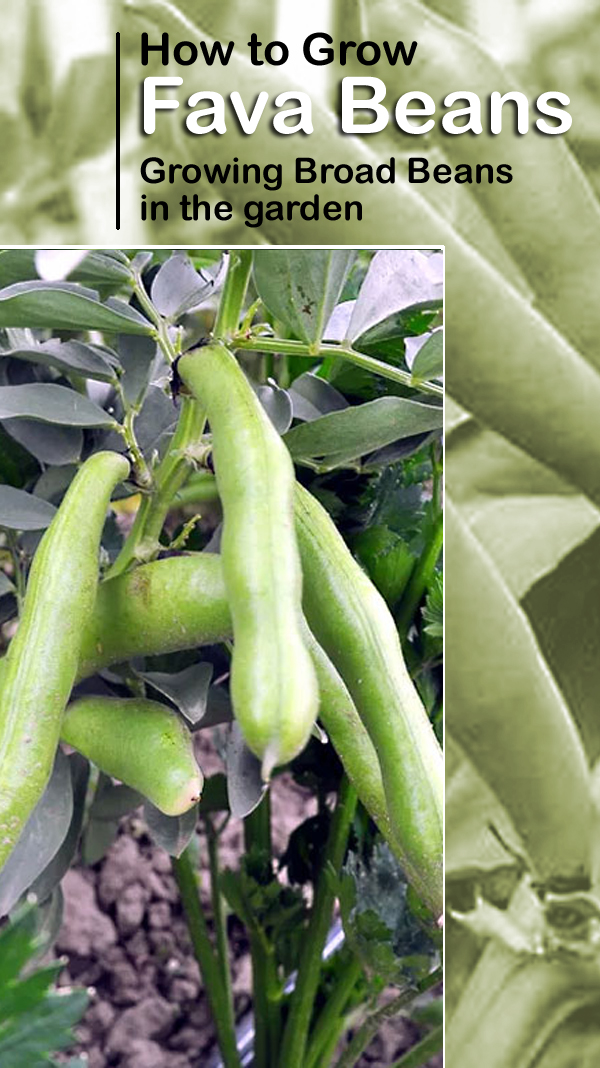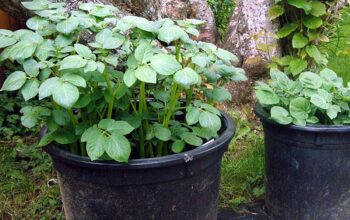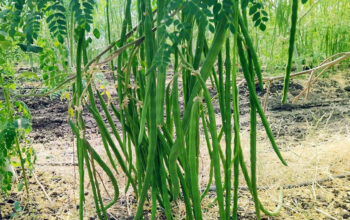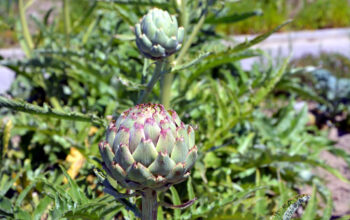Fava Beans Plant (Vicia faba)
Known in the culinary sense as the Broad Beans, fava bean, and faba bean, Vicia faba is a species of vetch that belongs to the pea and bean family Fabaceae. The crop is cultivated both as a human food crop and as a cover crop. Vicia faba is a square-shaped, stiffly erect plant taller than 1 meter with two to four stems. The leaves are 10 to 25 centimeters long, pinnately divided into 2–7 leaflets, and a bright glaucous grey-green color. The leaves of this plant do not have tendrils for climbing over other plants. There are five petals on the flower; the standard petals are white, the wing petals are white with a black spot, and the keel petals are also white. Learn Growing Broad Beans in your garden in this article.
The fava bean is packed with vitamins, minerals, fiber, and protein. They’re believed to have many health benefits, like improved motor function and immunity. People all over the world enjoy their slightly sweet, earthy taste.
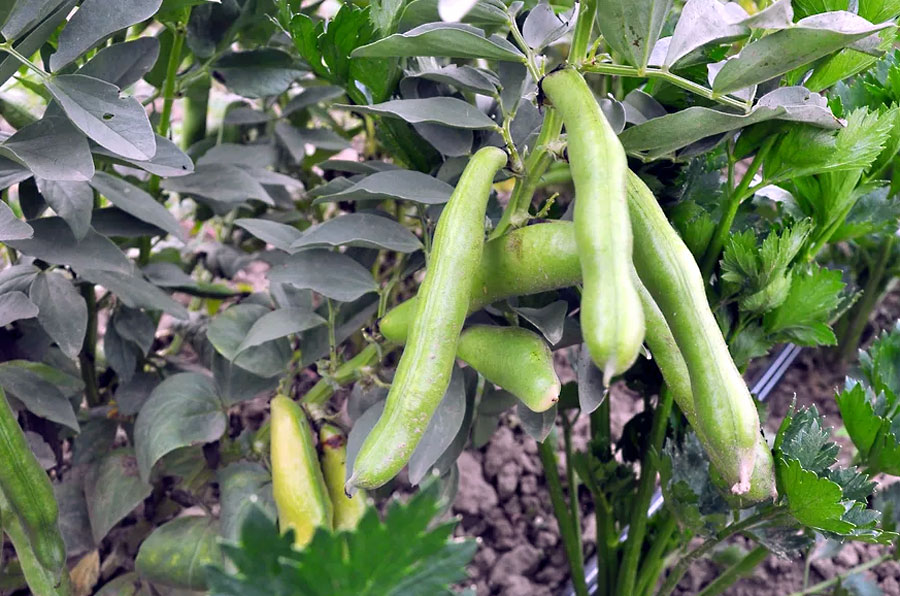
Classification Fava Beans Plant
Scientific Name Vicia faba
Common Name fava bean, faba bean, horse bean, and field bean
Plant Type Vegetable
Sun Requirements Full sun
Soil well-drained, loam soils
Soil pH 6.2 to 6.8
Blooming time Spring, Summer
Zone 2-10
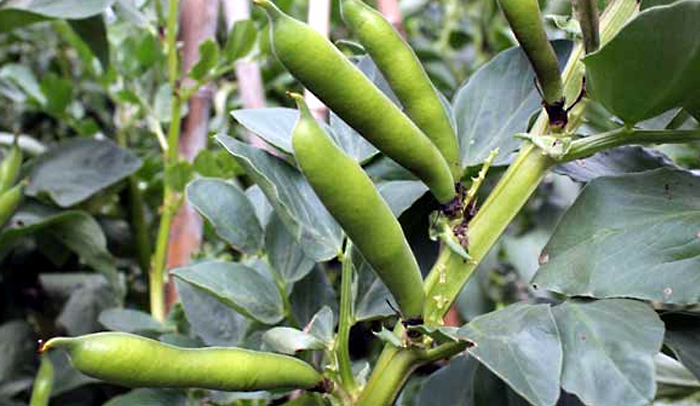
How to Grow and Care Fava Beans Plant
The best time to plant fava beans depends on the climate. As soon as the soil is workable, they are planted in the early spring. It is also possible to plant them in cooler climates in late summer or early fall. It’s possible to grow them year-round in mild climates. You should plant the seeds at least 6 inches apart and 1 to 2 inches deep. Each row should be roughly 2 feet apart. To avoid disturbing the roots once they mature, stake plants when they are still young.
Sunlight
Fava beans should be grown in full sun where they will receive at least six hours of direct sunlight per day. The fava bean performs best in full sun, but it does not flower well in hot, dry weather. However, they do grow adequately in partial shade as well. Make sure the planting location receives afternoon shade or filtered sunlight throughout the day.
Soil
Providing there is adequate drainage, fava beans can grow in a wide range of soil types. It is ideal to have loose, loamy soil with a pH range of slightly acidic to neutral. If your soil has a pH of 5.6 or lower, you should amend it with lime or wood ash. Although it’s not absolutely necessary, adding compost to your growing medium can boost your plants’ growth.
Watering
Fava beans are drought tolerant to a certain extent and require average water. Keep the soil moist while preventing it from becoming soggy. If possible, water favas in the morning or at dusk. Make sure your plant gets about an inch of water each week. The foliage of fava plants gets mildewed when water is applied directly to it. It is possible for favas to experience root rot in excessively wet seasons, so if there is a lot of rain, avoid watering. To determine if watering is necessary, check the soil’s top two inches.
Temperature and Humidity
The ideal temperature range is between 65 and 80 degrees Fahrenheit. If the temperature is too hot, the plants will struggle and be more likely to succumb to diseases. Most fava bean varieties can withstand temperatures as low as 40 degrees, although some are frost-resistant. Plant production increases at 75 degrees, as the fava begins to end its life cycle.
In general, humidity isn’t an issue as long as the soil is moist and there is good airflow around the plants.
Fertilizer
Often, fava beans don’t require additional fertilization because, like other legumes, they fix their own nitrogen into the soil. Compost can help grow plants, especially if the soil is nutrient-deficient. Although they don’t require much nitrogen, they need potassium and phosphorus. It is also important to use a fertilizer that includes soluble forms of sulfur for these beans. While heavily-diluted foliar feeds are effective, many granular organic fertilizers focus on bud and bloom development. The best time to use slow-release fertilizers is right before planting.
Pruning
To encourage bushier growth, pinch off the top few inches of growth when the plant starts flowering. Plants should be pruned to a few inches from the ground once the pods are ripe. It is possible for your fava beans to re-grow if the temperatures are suitable, and you can harvest them again.
Read also:
How to grow Dieffenbachia houseplants. Growing Vanilla beans plant in your backyard. Anises plants growing guide. How to grow Healthy roses 10 tips. Cluster bens growing and care tips. Growing and caring for orchids. Kalanchoe plants growing and care tips. Peperomia plants growing and care guide. Plumbago auriculata growing guide. Varieties of pepper plants. Guduchi plants growing and care tips.
For pin:


